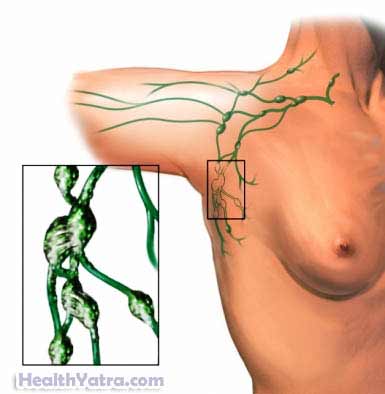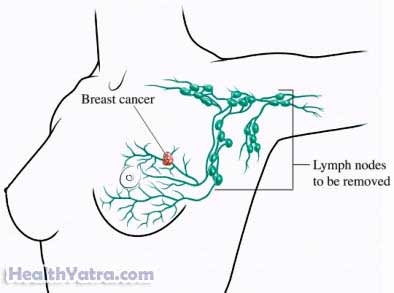Definition
The lymph system helps your body fight illness. Lymph fluid travels throughout the body in lymph nodes and vessels. The fluid builds up if these nodes or vessels are blocked, damaged, or missing. Fluid build-up in the arms or legs is called lymphedema. There are two types of lymphedema:
- Primary lymphedema is uncommon and occurs because people are born without lymph nodes and vessels.
- Secondary lymphedema occurs when there is injury to the lymph nodes or vessels.
Causes
Lymphedema can be caused by a variety of factors:
- Primary lymphedema
- Born without lymph vessels and nodes
- Milroy’s disease
- Meige disease
- Late-onset lymphedema
- Secondary lymphedema
- Surgery for cancer
- Radiation treatment for cancer
- Burns
- Liposuction
- Surgery on blood vessels
- Infection
- Trauma
Risk Factors
These factors increase your chance of developing lymphedema. Tell your doctor if you have any of these risk factors:
- Surgery that removed lymph nodes such as breast cancer surgery
- Radiation treatment
- Cancer
- Infection
- Parasites—tropical/subtropical regions
- Overweight
- Poor diet
Symptoms
Symptoms of lymphedema include:
- Swelling in arms, legs, fingers, or toes
- Loss in range of motion
- Infection
- Aching, pain, or discomfort
- Heaviness or tightness of skin
- Your clothes, shoes, or jewelry feel tight
- Hardening of the skin
- Redness of skin
Diagnosis
Cases of lymphedema can vary from mild to severe. Your doctor will ask about your symptoms and medical history. A physical exam will be done.
Images may need to be taken of your body structures. This can be done with:
- MRI scan
- CT scan
- Duplex ultrasound or Doppler ultrasound
Other tests may include:
- Measurement of your arms and/or legs—to assess the severity of fluid build-up
- Lymphoscintigraphy—a test that uses dye to trace its travel through your lymph system
Treatment
Talk with your doctor about the best plan for you. Options include the following:
Drainage
Your doctor or physical therapist may show you exercises to drain fluid out of your arm or leg. Massage may also be used to help fluid drain. Sometimes, external pumps are used to help drain the fluid build-up.
Compression
Compression stockings, sleeves, or bandages are often used to direct fluid away from your affected arm or leg. You may be shown how to apply a compression device.
Medicine
Areas of lymphedema are at risk for infection. Your doctor may prescribe an antibiotic to prevent or treat infection. If the condition is painful, your doctor may suggest or prescribe a pain reliever.
Surgery
In severe cases, surgery to remove extra tissue from your arm or leg may be considered.
Prevention
If you are at risk for developing lymphedema, there are measures you can take to help reduce your chance of getting the condition.
If you are at risk, you can prevent swelling and fluid if you:
- Do not allow anyone to take blood or your blood pressure on your affected arm or leg.
- Wear a medical bracelet warning of your risk for developing lymphedema.
- Avoid crossing your legs or carrying items on your shoulder if either area is at risk.
- Maintain a healthy weight and eat properly.
- Avoid ice packs or heating pads to the affected area.
- If you had lymph nodes in your armpit removed during breast cancer surgery, participating in a physical therapy program may help to prevent lymphedema.
You can prevent side effects if you:
- Keep your affected arm or leg clean.
- Keep hands and feet protected by wearing gloves and shoes.
- Use an electric razor to shave.
- Use sunscreen when outdoors.


